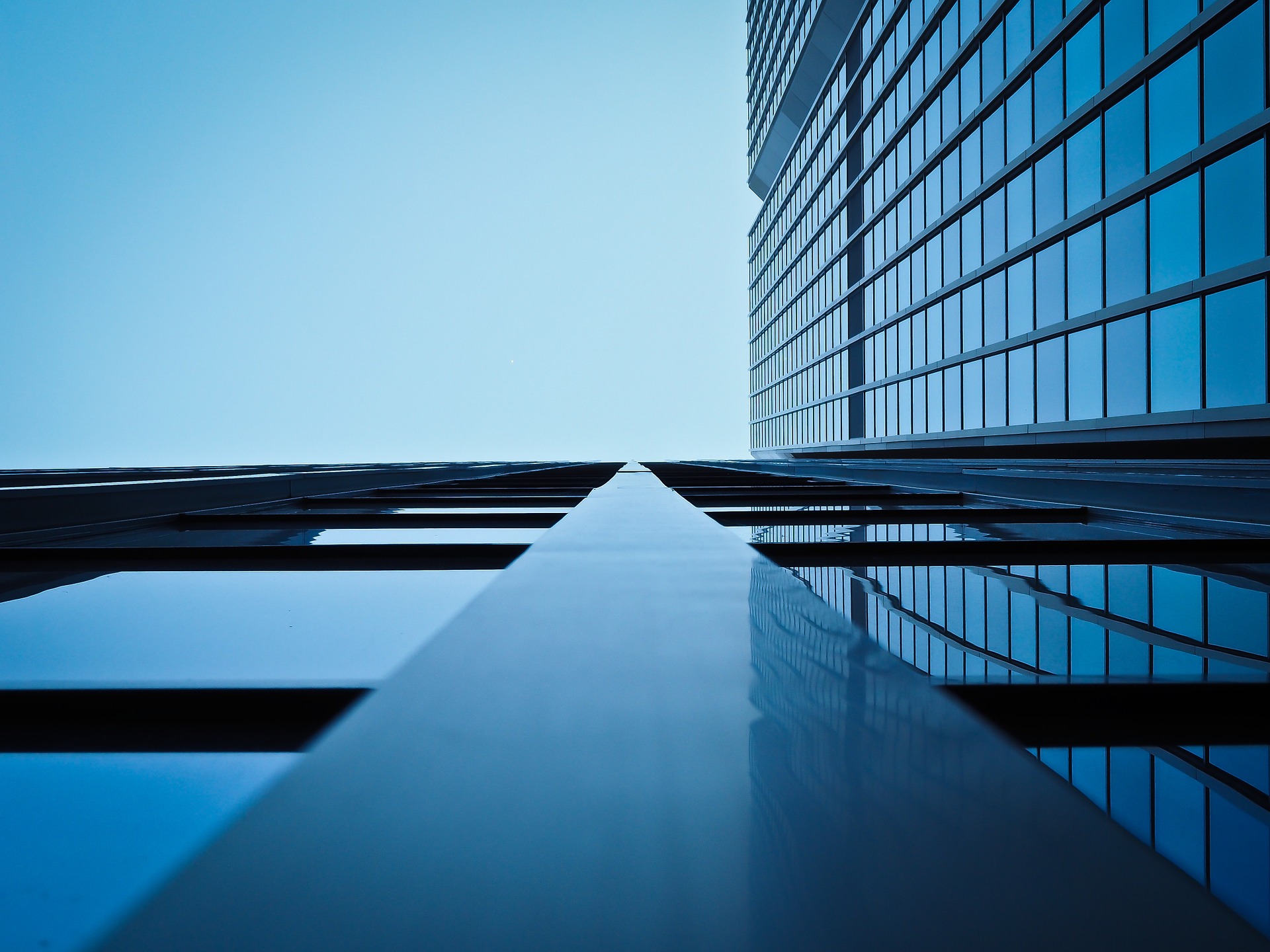When are Sprinklers Required in NYC Office Buildings?

New York City is home to plenty of buildings that are decades old, and as a result many of them were not equipped with automatic sprinklers when first built. In addition, there was no code requiring such systems retroactively. However, after 9/11 it was decided that the fire protection measures of NYC buildings were insufficient, and the World Trade Center Building Code Task Force was created to review current standards and suggest improvements. Their recommendations focused on four key areas:
- Structural strength
- Fire protection measures
- Emergency evacuation
- Mechanical installations
Their recommendations were incorporated into NYC Codes through the Local Law 26 of 2004, after approval by Mayor Michael Bloomberg. Some of the changes were retroactive, requiring upgrades for key systems in existing buildings.
Automatic Sprinkler System Requirements
With respect to fire protection, one of the main changes was making automatic sprinkler systems mandatory for all office buildings taller than 100 feet, and the measure was retroactive. Considering that an automatic sprinkler system can involve significant expenses and lead times in the case of large buildings, a deadline of 15 years was established: all buildings were required to complete the installation and approval of their automatic sprinkler systems by July 1, 2019, submitting a final project report.
It is important to note that the requirement only applies for office buildings, and any other buildings classified under occupancy group E (business), if their height exceeds 100 feet.
Partial Exceptions
There are two cases where specific areas of a building can be exempt from mandatory automatic sprinklers, upon approval by the NYC Fire Department Commissioner.
- Interior Landmarks: Automatic sprinklers are not required in areas where their installation would involve modifications to an area designated as an Interior Landmark by the NYC Landmarks Preservation Commission.
- Structural Condition: If the structural condition makes automatic sprinklers unfeasible, the corresponding building areas can be waived.
In both cases, additional fire protection measures may be required at the commissioner’s discretion, if considered necessary to compensate for the lack of sprinklers.
Building owners facing economic hardships or other major circumstances that delay building completion can apply for a deadline extension, as long as they provide evidence of their current situation
Building Conversions
It is important to note that the July 1, 2019, deadline only applies for existing buildings that were already classified as occupancy group E before Local Law 26 was published. If a building from another occupancy group is converted into an office building, or any other group E occupancy, installation of the automatic sprinkler system is required immediately. In other words, the building is not approved for legal use under the new occupancy classification, unless the automatic sprinkler system is installed and approved.
Project Report Requirements
To track sprinkler installation progress for all applicable buildings, Local Law 26 established a series of interim reports to be delivered by each building owner, each with its own deadline, as well as a final report:
Owner’s Affidavit (July 1, 2005): Through this document, building owners acknowledged that an automatic sprinkler system was required by July 1, 2019, and expressed their willingness to comply.
7-Year Report (July 1, 2011): Document indicating the percentage of building area that already has sprinklers, and the implementation plan for the rest of the building. This document required certification by an architect or engineer.
14-Year Report (July 1, 2018): Same document structure as the 7-Year Report.
Final Report (July 1, 2019): Document detailing the completed project, including a certification from an architect or engineer, stating that the building meets all applicable codes.
As of 2017, only the 14-Year Report remains before the Final Report. If the Final Report is delivered before July 1, 2018, submitting the 14-Year Report is no longer necessary.
Get expert advice on sprinkler system installation
Sprinkler Systems in New York City: Tips for Successful Implementation
NYC codes are characterized by their stringent requirements for all building systems, especially when dealing with fire protection. In the case of sprinkler systems, several codes apply:
- NYC Administrative Code
- NYC Fire Code
- NYC Building Code
- NFPA 13, 13D, 13R, 14, 20 and 72
This section will provide some recommendations to minimize the cost and installation time of automatic sprinkler systems subject to Local Law 26.
1) Hire the Services of a Qualified Engineering Firm
Although experts charge a premium for their services, the benefits of hiring them far outweigh the extra cost. When you work with qualified professionals who are familiarized with NYC codes and paperwork, the project flows smoothly, minimizing or eliminating change requests from the NYC Department of Buildings.
Any professional services that expedite paperwork and permitting are welcome in projects with tight deadlines: keep in mind that all automatic sprinkler systems must be approved and operational by July 1, 2019, and such a project can take more than one year in a large building.
2) Merge Upcoming Building Renovations to Reduce Total Project Costs
If you are planning building renovations in the short term, consider merging them with the automatic sprinkler project. This will consolidate paperwork and activities that may be duplicated if the projects are carried out separately, reducing their total cost and man-hours.
Another advantage of merging projects is that architectural design and sprinkler system layout can be coordinated so that the building gets full coverage, while deploying the smallest number of sprinkler heads possible. This provides further savings by eliminating unnecessary piping and optimizing the capacity of fire pumps.
Gain some insight into the process behind building or remodeling your office space with our info-graphic here.
3) Avoid Automatic Standpipes
If an automatic standpipe is mandatory for your building, project costs are increased significantly due to the extra control measures and fire pump capacity required. Chapter 9 of the NYC Building Code deals with standpipes in depth, detailing the cases where it must be automatic and those where a manual one will suffice.
If you are working with a qualified design firm, they can optimize your project so that none of the conditions for mandatory automatic standpipes are met. This is another reason to work with experts in these types of projects.
Final Inspection: How Are Automatic Sprinkler Systems Evaluated?
Keep in mind that the Local Law 26 deadline is not only for project completion, but also approval. Automatic sprinkler systems in NYC must pass a series of tests, so it is highly recommended that you aim for project completion well in advance of the deadline. The main tests carried out for automatic sprinkler systems are the following:
- Hydrostatic Pressure Test:The automatic sprinkler system is subject to a pressure 100 psig at the uppermost sprinkler head during one hour, and then 200 psig at the lowest cross connection. Pressure tanks are subject to 150 percent of their working pressure during one hour.
- System Performance Test: The system is activated to verify that all components are working properly and in coordination.
- Supervisory Service Test: All components connected with an approved fire-alarm company (third-party) are tested
Any tests applicable to standpipe systems and fire pumps must also be completed before the project deadline. The best way to approve tests with minimal or zero changes it to work with qualified professionals from the start of the project; that way, quality and performance are built into the system starting from the design phase.
Editors Note: This post was originally published in April 2017 and has been revamped and updated for accuracy and comprehensiveness.

Anuj Srivastava
Anuj Srivastava is a principal partner at NY Engineers. He is known for his MEP franchise market knowledge. Anuj is currently leading a team of 100+ MEP/FP engineers and has successfully led over 1500 franchise projects in the US.
Join 15,000+ Fellow Architects and Contractors
Get expert engineering tips straight to your inbox. Subscribe to the NY Engineers Blog below.



